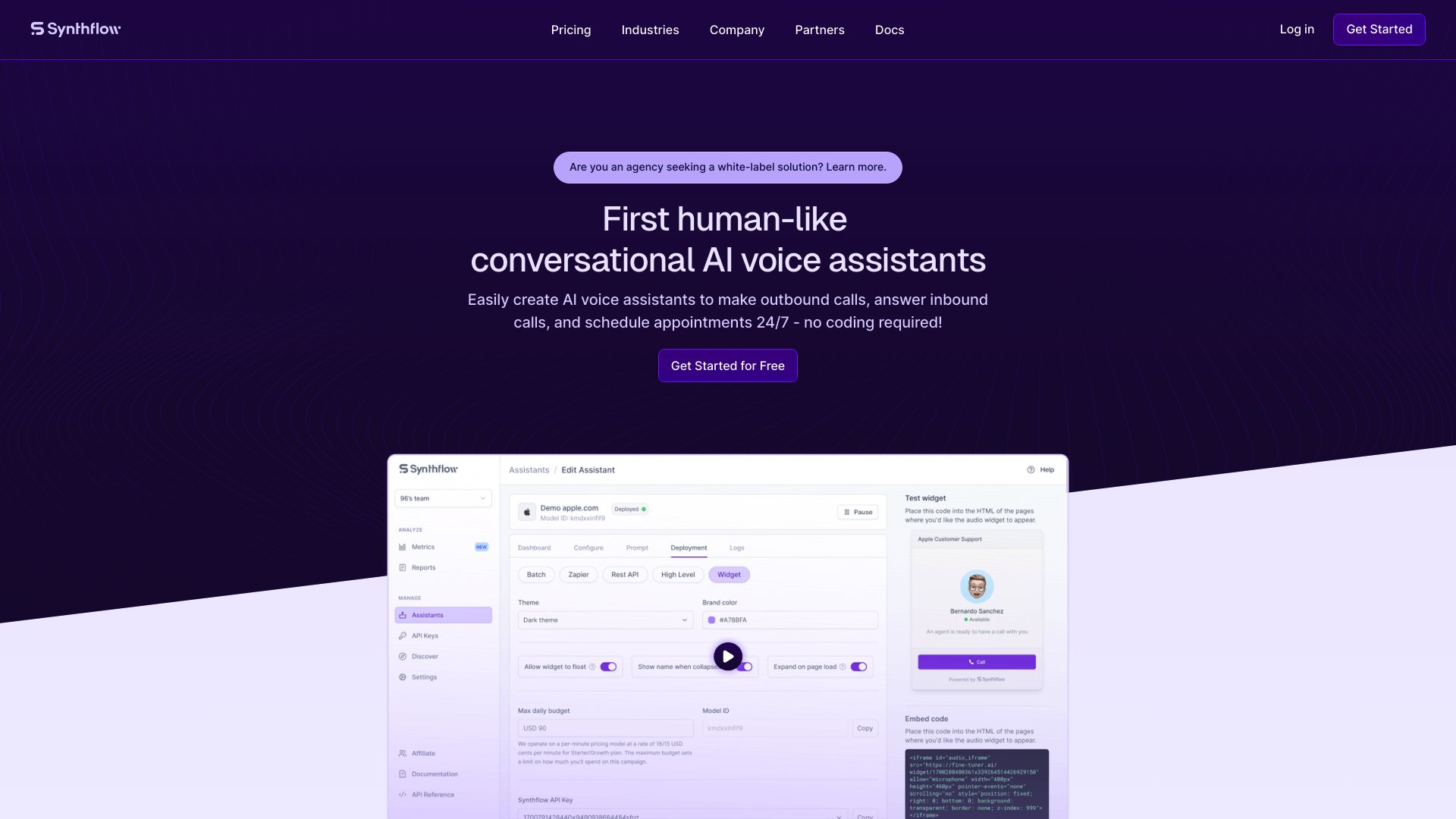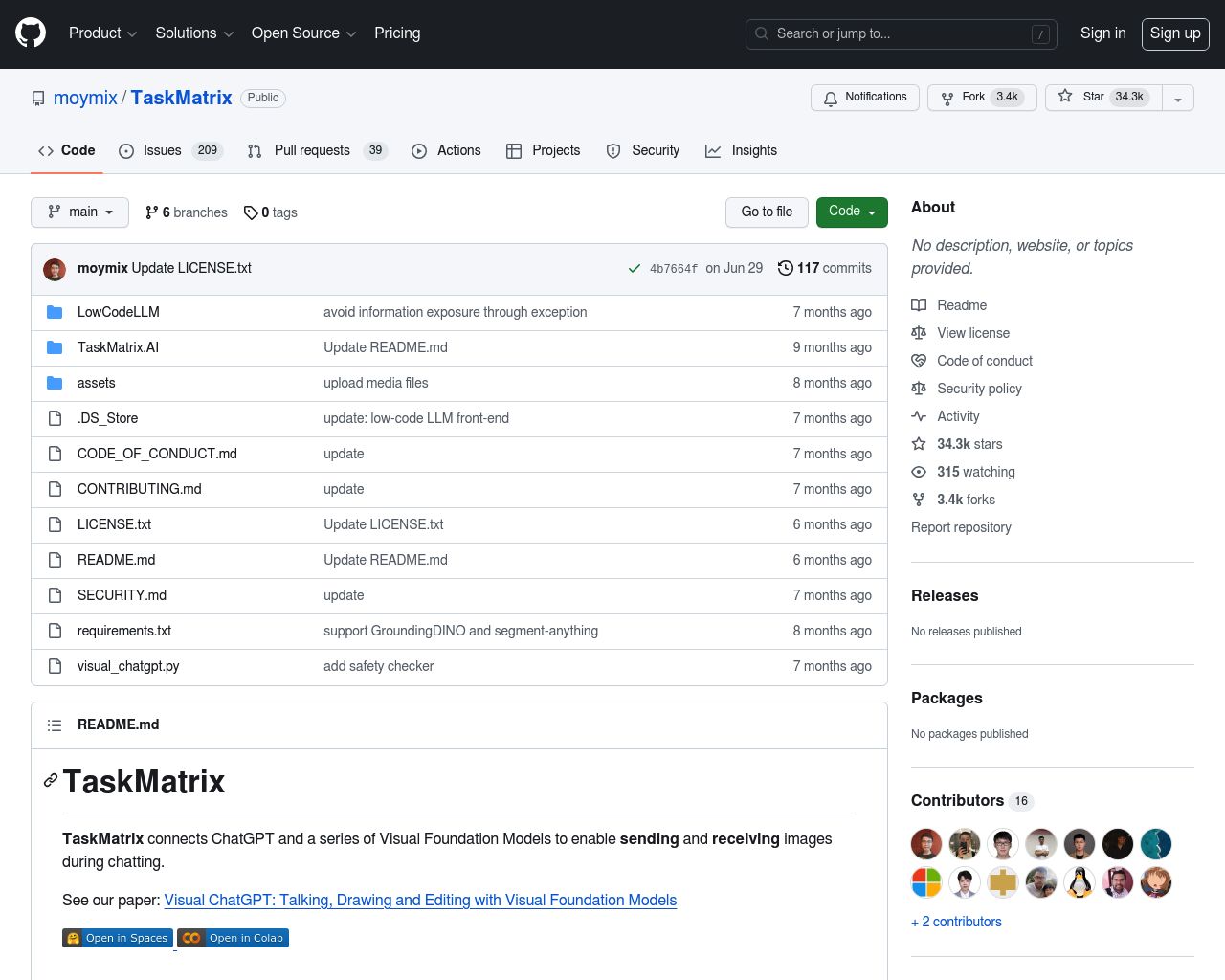Synthflow vs. TaskMatrix: AI Agent Creation Compared
AI technologies revolutionize how businesses operate, communicate, and innovate. Synthflow vs. TaskMatrix, and SmythOS offer unique approaches to AI agent creation, each with distinct strengths and limitations. This comparison explores their key features, usability, and overall value for businesses seeking to harness AI’s power. We’ll examine how these platforms empower users to build sophisticated AI assistants, integrate with existing systems, and scale operations. Whether you’re a developer, business leader, or AI enthusiast, this review provides insights to help you choose the right AI solution for your needs. Discover how these platforms stack up in terms of customization, security, and ease of use, and learn which one might best serve your organization’s AI ambitions.
Synthflow Overview
Synthflow empowers businesses to create customizable AI voice assistants without coding expertise. The platform’s no-code interface and pre-built templates make it accessible to users with varying technical backgrounds, from developers to business professionals.
- Synthflow empowers businesses to create customizable AI voice assistants without coding expertise.


Synthflow’s AI assistants excel in diverse tasks, including customer support, lead generation, and appointment scheduling. The platform prioritizes data security, offering unlimited secure storage in a dedicated Pinecone environment. Integration capabilities with tools like 11Labs and Twilio expand functionality, while batch deployment options enable large-scale communication campaigns.
The visual builder simplifies AI agent creation, allowing users to design, deploy, and manage assistants effortlessly. Synthflow supports both development and production environments, facilitating seamless testing and deployment. The platform’s AI agents maintain context within conversations, enhancing interaction quality through personalized responses.
The visual builder simplifies AI agent creation, allowing users to design, deploy, and manage assistants effortlessly.
While Synthflow excels in voice AI, it lacks explicit support for multimodal interactions combining text, voice, and visual inputs. The platform also doesn’t offer foundation AI models or direct integration with Huggingface AIs. Despite these limitations, Synthflow’s focus on user-friendly AI creation and robust security features positions it as a valuable tool for businesses seeking to enhance customer interactions and operational efficiency through AI technology.
TaskMatrix Overview
TaskMatrix is an open-source AI ecosystem developed by Microsoft. It enhances general-purpose foundation models like GPT-4 by integrating them with specialized models through APIs. TaskMatrix functions as a project manager, bridging diverse AI models to perform a wide range of tasks efficiently.
TaskMatrix connects foundation models with specialized APIs, enabling execution of tasks in both digital and physical realms. The system interprets user instructions, generates executable action codes, and performs tasks using appropriate APIs. Its key components include a conversational foundation model, an extensive API platform, an API selector, and an action executor.


The platform stands out for its ability to seamlessly integrate multiple AI models and systems. TaskMatrix’s uniqueness lies in its capability to perform both digital and physical tasks, lifelong learning abilities, and provision of interpretable responses through understandable task-solving logic and API outcomes.
TaskMatrix aims to create an AI ecosystem leveraging both foundation models and specialized APIs to accomplish diverse tasks.
TaskMatrix aims to create an AI ecosystem leveraging both foundation models and specialized APIs to accomplish diverse tasks. Its goal is to build a super-AI capable of executing complex tasks, enhancing productivity and creativity across domains like office automation, robotics, and IoT.
While TaskMatrix offers powerful capabilities, it may present challenges for users without technical expertise. The open-source nature of the platform requires a certain level of programming knowledge to fully utilize its features, potentially limiting accessibility for non-technical users.
Feature Comparison
Synthflow and TaskMatrix offer distinct approaches to AI agent creation, with notable differences in their core components and security features. Synthflow excels in providing a user-friendly, no-code interface for building customizable AI voice assistants. Its visual builder and pre-built templates make it accessible to users with varying technical backgrounds. However, Synthflow lacks support for foundation AI models and direct integration with Huggingface AIs, limiting its flexibility for more advanced AI applications.
In contrast, TaskMatrix, developed by Microsoft, focuses on enhancing general-purpose foundation models by integrating them with specialized APIs. This approach allows for more complex task execution across both digital and physical realms. TaskMatrix’s ability to interpret user instructions, generate executable action codes, and perform tasks using appropriate APIs gives it an edge in handling diverse and sophisticated AI operations. However, its open-source nature may present challenges for users without technical expertise, potentially limiting its accessibility compared to Synthflow’s more user-friendly approach.
Regarding security, both platforms prioritize data protection, but their implementations differ. Synthflow offers robust data encryption and secure storage solutions, including a dedicated Pinecone environment for vector storage. TaskMatrix, while not explicitly mentioning specific security features, likely benefits from Microsoft’s enterprise-grade security practices. However, the open-source nature of TaskMatrix may require users to implement additional security measures themselves, potentially creating gaps in the security framework for less experienced users.
Feature Comparison Table
| Synthflow | TaskMatrix | SmythOS | |
|---|---|---|---|
| CORE FEATURES | |||
| Multimodal | ❌ | ✅ | ✅ |
| SECURITY | |||
| IP Control | ❌ | ✅ | ✅ |
| COMPONENTS | |||
| Huggingface AIs | ❌ | ✅ | ✅ |
| Classifiers | ❌ | ✅ | ✅ |
| Data Lakes | ❌ | ❌ | ✅ |
| DEPLOYMENT OPTIONS (EMBODIMENTS) | |||
| Staging Domains | ❌ | ✅ | ✅ |
| Production Domains | ❌ | ✅ | ✅ |
| DATA LAKE SUPPORT | |||
| Hosted Vector Database | ✅ | ❌ | ✅ |
| Sitemap Crawler | ✅ | ❌ | ✅ |
| YouTube Transcript Crawler | ✅ | ❌ | ✅ |
| URL Crawler | ❌ | ✅ | ✅ |
| PDF Support | ❌ | ✅ | ✅ |
| Word File Support | ❌ | ✅ | ✅ |
| TXT File Support | ❌ | ✅ | ✅ |
Best Alternative to Synthflow and TaskMatrix
SmythOS emerges as the premier alternative to Synthflow and TaskMatrix, offering a comprehensive AI automation platform that surpasses both in versatility and ease of use. We’ve designed SmythOS to empower users with a robust set of features that streamline the creation and deployment of AI agents across diverse applications.
Our platform stands out with its intuitive drag-and-drop interface, making AI development accessible to users of all skill levels. Unlike Synthflow’s limited focus on voice assistants or TaskMatrix’s complex API integrations, SmythOS provides a universal solution for building AI agents that can handle a wide array of tasks, from customer service to data analysis and beyond.
SmythOS excels in its extensive integration capabilities, supporting a vast ecosystem of AI models, APIs, and third-party services.
SmythOS excels in its extensive integration capabilities, supporting a vast ecosystem of AI models, APIs, and third-party services. This flexibility allows users to create sophisticated AI workflows that seamlessly connect with existing business processes. Our platform’s support for multimodal interactions, including text, voice, and visual data, surpasses the limitations of Synthflow and matches the capabilities of TaskMatrix while maintaining a user-friendly approach.
Security and scalability are paramount in SmythOS. We offer robust data encryption, OAuth authentication, and IP control features, ensuring that your AI agents operate in a secure environment. Our platform’s ability to scale effortlessly from small projects to enterprise-level deployments sets it apart from both Synthflow and TaskMatrix, making it an ideal choice for businesses of all sizes.
With SmythOS, we’ve eliminated the barriers to AI adoption, offering unlimited use cases and a feature-rich environment that adapts to your specific needs. Whether you’re building a simple chatbot or orchestrating complex multi-agent systems, our platform provides the tools and support necessary to bring your AI vision to life quickly and efficiently.
Conclusion
Synthflow, TaskMatrix, and SmythOS each offer unique approaches to AI agent creation and deployment. Synthflow excels in user-friendly voice assistant development, while TaskMatrix provides a powerful open-source ecosystem for integrating foundation models with specialized APIs. However, SmythOS emerges as the superior choice, combining ease of use with unparalleled flexibility and scalability.
SmythOS stands out with its intuitive drag-and-drop interface, extensive integration ecosystem, and versatile deployment options. Unlike Synthflow’s focus on voice assistants or TaskMatrix’s technical complexity, SmythOS empowers users across technical skill levels to create sophisticated AI workflows for various applications. Its support for multimodal interactions, problem-solving capabilities, and seamless collaboration between multiple agents sets it apart in functionality and adaptability.
The platform’s robust security features, including data encryption and OAuth support, address the growing concerns around AI and data protection. SmythOS also offers unmatched scalability, supporting enterprise-level deployments while maintaining accessibility for smaller teams and individual developers. This balance of power and usability makes SmythOS an ideal solution for businesses looking to leverage AI across their operations.
For those ready to experience the future of AI agent creation and deployment, SmythOS offers a risk-free trial. Explore our extensive library of AI agent templates to jumpstart your projects, or dive into our comprehensive documentation to unlock the full potential of the platform. With SmythOS, you’re not just adopting a tool – you’re embracing a new paradigm in AI-driven innovation and efficiency.
Last updated:
Disclaimer: The information presented in this article is for general informational purposes only and is provided as is. While we strive to keep the content up-to-date and accurate, we make no representations or warranties of any kind, express or implied, about the completeness, accuracy, reliability, suitability, or availability of the information contained in this article.
Any reliance you place on such information is strictly at your own risk. We reserve the right to make additions, deletions, or modifications to the contents of this article at any time without prior notice.
In no event will we be liable for any loss or damage including without limitation, indirect or consequential loss or damage, or any loss or damage whatsoever arising from loss of data, profits, or any other loss not specified herein arising out of, or in connection with, the use of this article.
Despite our best efforts, this article may contain oversights, errors, or omissions. If you notice any inaccuracies or have concerns about the content, please report them through our content feedback form. Your input helps us maintain the quality and reliability of our information.
